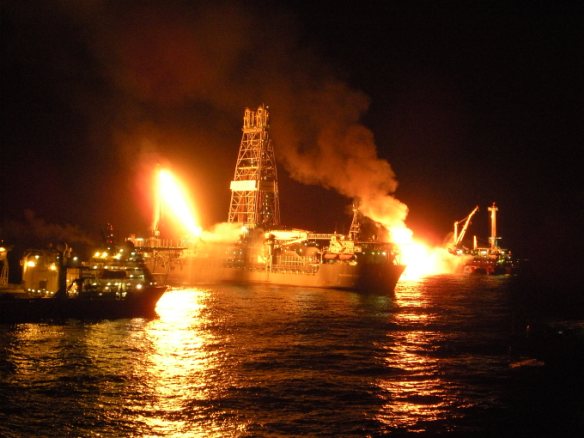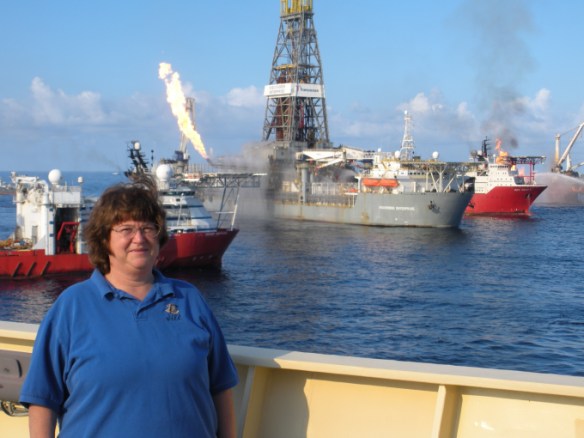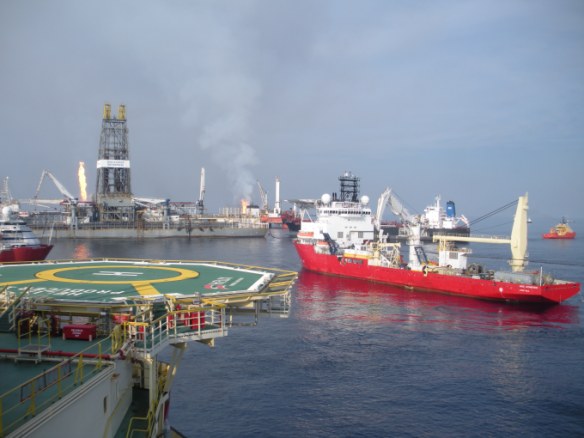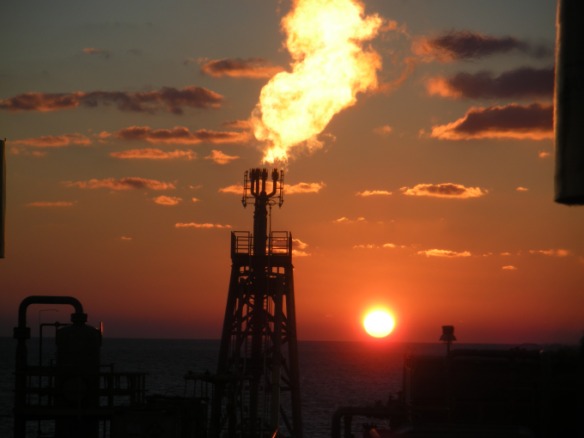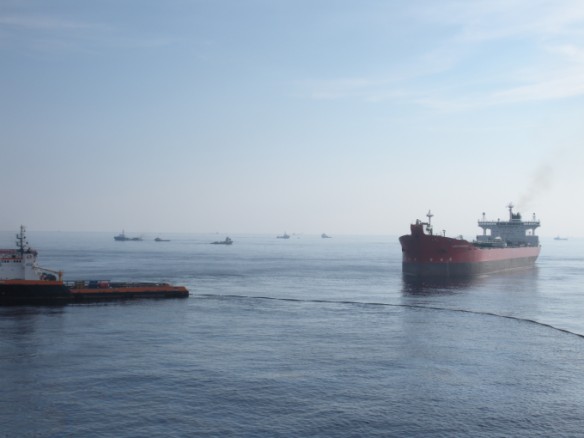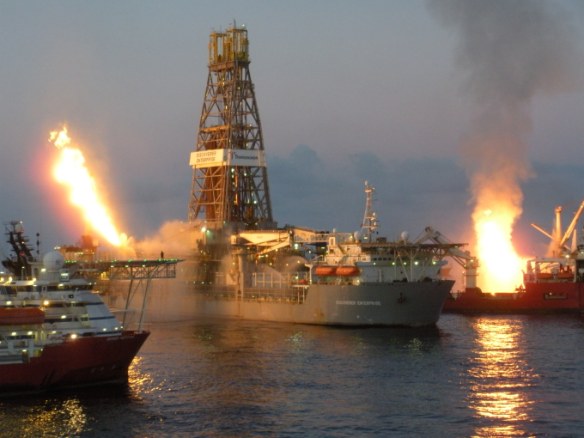This post is for Terri’s Sunday Stills. This week the topic is “fire”. I don’t have many photos of fire. It’s not something I see very often (and not hoping to see more of). I’ve tried to take photos of campfires and they turned out as just one giant glob of white against a pitch black background.
I have been trained in fire-fighting. So I have fought quite a few fires during that training. I’ve taken the basic fire-fighting course at least a dozen times since my first in 1978. I’ve taken the advanced class a couple of times too. The US Coast Guard recently decided we have to take both of these courses a minimum of every 5 years (another painful expense due to STCW). Now, I teach it sometimes. It’s very rare that I can get a photo during the classes.

I was still working full time during and after the Deepwater Horizon disaster. Luckily I was working as second mate/SDPO onboard the Helix Producer 1 (HP-1). I say luckily because President Obama declared a ‘moratorium’ which forced hundreds of boats into lay up and thousands of people to lose their jobs.
The Deepwater Horizon disaster was the worst oil spill in the US Gulf of Mexico (but not even in the top ten worldwide).

I have read some of the investigations results, watched the movie, read a couple of good books, and I have my own ideas about what caused it. President Obama and his moratorium tried to come up with some ideas to prevent this sort of thing from ever happening again. Although they did come up with some ideas and some changes have been made, I don’t think they’ve actually done much to get to the root of the problem (and Trump’s revisions won’t make much difference either).
I was Senior DPO on the HP-1 throughout the major response to the Macondo incident. We were brought out to try and capture the oil that was spewing out of the blown out piping at the bottom of the ocean, about 5000 ft down.

The HP-1 is a specialized type of ship. She’s a Floating Production Unit (FPU). Ordinarily she sits on top of location, stabilized by the use of a dynamic positioning (DP) system. She’ll be attached to a series of marine risers (floating hoses). Those risers are flowing raw product (crude oil) from various production platforms in the area. The risers come aboard the HP-1 through a specialized buoy. As the product comes onboard, it is diverted through the ships systems to separate the oil from the water and other contaminants and then sent back through the buoy to facilities ashore to further refine the product.
We succeeded in connecting up to the well. We were only a small part of a massive response to the disaster. There were entire fleets of boats out there working to contain and clean up the mess. It looked like a major city all lit up at night. It was pretty hairy sometimes trying to maintain position so close to all those other vessels, especially when the weather kicked up. The SIMOPS and the people involved were incredible!

We sat there for weeks, bringing what we could of the flowing oil up to our onboard facility. There was another similar vessel stationed on the far side of the drillship Discoverer Enterprise (which was stationed directly over the well). On the HP-1, we took what we could, we separated the gas from the fluid and flared (burned) the gas.

We did not have a whole lot of storage capacity on our ship (a FPSU- floating production and storage unit) would have much more. Instead of storing it ourselves, we gave it to a tanker. The shuttle tanker Loch Rannoch sent their hose over to us with the help of a couple of smaller boats. We would connect it up and pump over the oil and they would bring it in to shore for processing. They would go back and forth every couple of days as long as we were there.

After they finally got the well capped and the oil stopped flowing, we were released, along with most of the other vessels that were still out there. We had to go to a shipyard (in Tampa) where we could get hauled out of the water for cleaning. We had been coated with oil all over our hull from the spill. Once we were all cleaned up, we went back to our buoy. As far as I know, the HP-1 has not had to leave it again since. I wish now I hadn’t quit that job!


